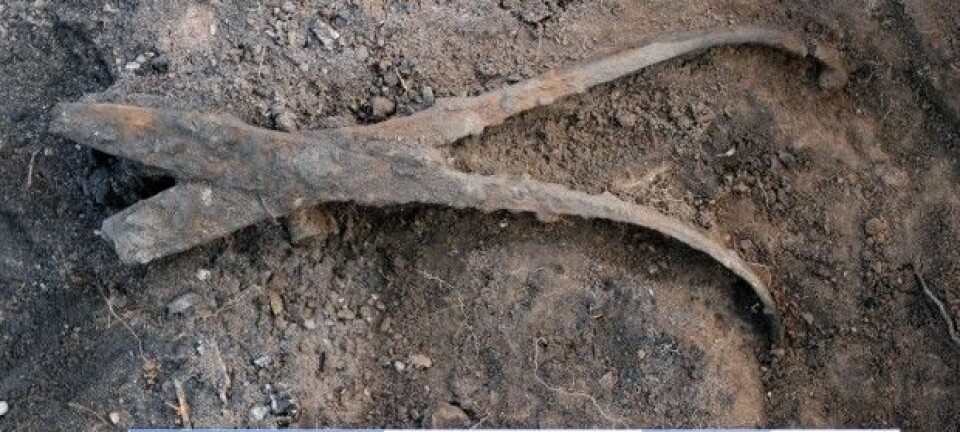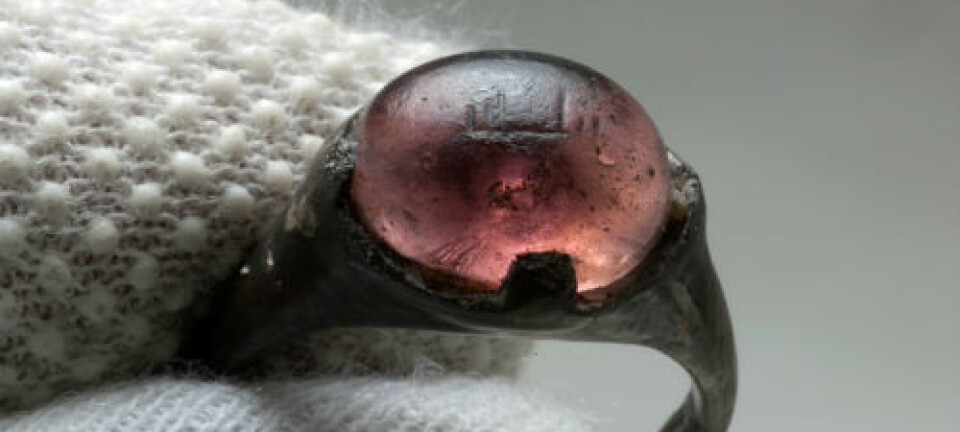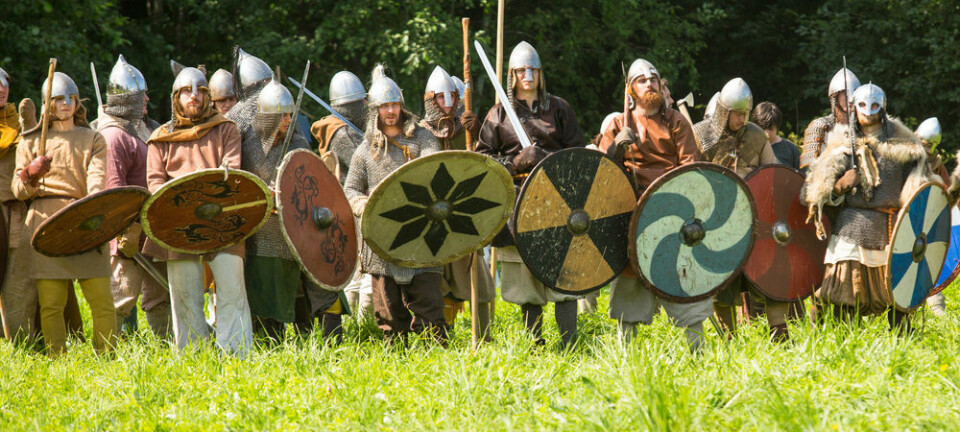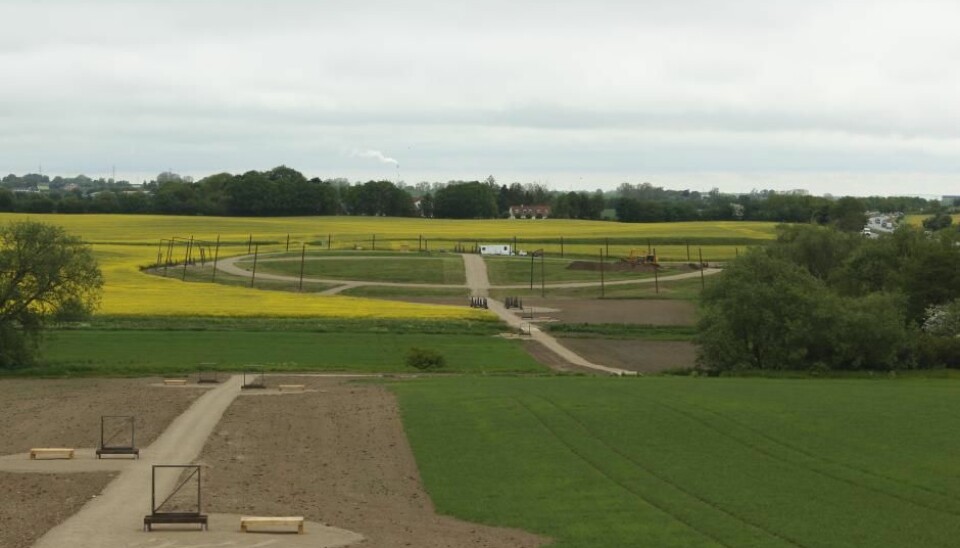
Viking fortress in Denmark stumps archaeologists
Archeologists have drawn a blank at one of Denmark’s most recently discovered Viking castles, after finding nothing except a single, solitary glass bead.
One single bead is all archeologists have found so far, during the excavation of a Viking fortress in Denmark.
The ring fortress made the headlines in 2014 when it was first discovered.The first on-site examinations got underway shortly after, with test excavations at select sites and amateur archaeologists, who crisscrossed the site with metal detectors.
The official excavations have just begun and the area around the castle is yet to be excavated.
It could all change, but right now archeologists are left with the impression of an empty site. No Viking related finds have appeared except for one small glass bead. There are no signs of any houses within the castle stockade, no moat or pits outside, no weapons, no tools and no remains of everyday clothing.
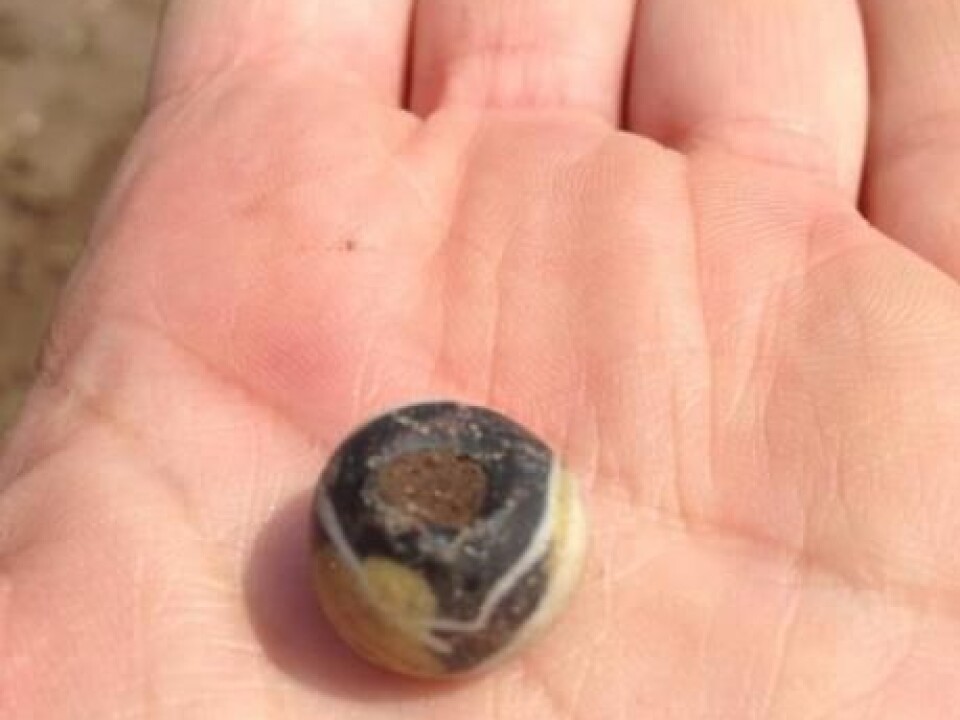
When it comes to finding any evidence of Viking life, "it’s very sparse!" says archaeologist and excavation leader, Jens Ulriksen, from the Museum of Southeast Denmark.
So the big question is: why?
The Fortress will not play ball
The Viking fortress is one of five similar castles in Denmark and was heralded as the archeological discovery of the year in 2014. It is not hard to see why. For the first time in more than half a century, archaeologists had unveiled a brand new ring castle--an iconic style of Viking fortress in Denmark.
Archeologists thought that free and independent chieftains once ruled Denmark. But the discovery of these large fortresses indicated a strong royal presence in Harald Bluetooth, who had the means to complete these giant construction projects.
Where are the postholes, arrowheads, and the moat?
Just because archeologists have not yet uncovered anything, does not mean to say that they won’t. The ring fortress project known as ‘Vikingeborgen’ will run until the end of 2018, so there is still plenty of time left. And who knows; tomorrow they could stumble upon postholes and arrowheads galore.
But Ulriksen is nonetheless puzzled by the lack of finds so far.
“This looks nothing like the other castles, in terms of the lack of finds. And we may well ask, did anyone ever live here? Was it just the builders who lived in the area? Are there any houses? Is there a moat?”
"We simply don’t see the same remains of settlement that we do at the other sites. It's a bit of a mystery," says Ulriksen.
Fortress destruction linked to Bluetooth's death
Archaeologists are right now trying to determine when exactly the fortress was built.
The first dates indicate that the north port was built sometime in the 900s CE.
"I hope we find the answer as to when the castle was built and when it was destroyed. It could be interesting to see if it’s linked to the death of Harald Bluetooth," says Ulriksen.
Of course the other possibility is that the castle was simply never finished, as the lack of houses and the non-existent moat might suggest.
A little gem with great value
For now the little glass bead is the only tangible evidence that Vikings were ever at the fortress. And although it does not seem like much, it has great value for the archaeologists, who are currently working around the clock to gather more knowledge from the excavation.
"The dating of Vikingborgen [the ring fortress] hangs primarily on two types of evidence. The north gate--which is roughly in the 900s, but this isn’t very precise. To get a more precise date [on this], we need something like a well preserved piece of oak from which we can date the tree-rings," says Ulriksen.
The other line of evidence is from the glass bead, whose style is typical of the later half of the 900s.
“But when in the 900s? This is crucial and I really hope that we can get answers," says Jens Ulriksen.
-------------
Read the Danish version of this article on Videnskab.dk
Translated by: Catherine Jex
